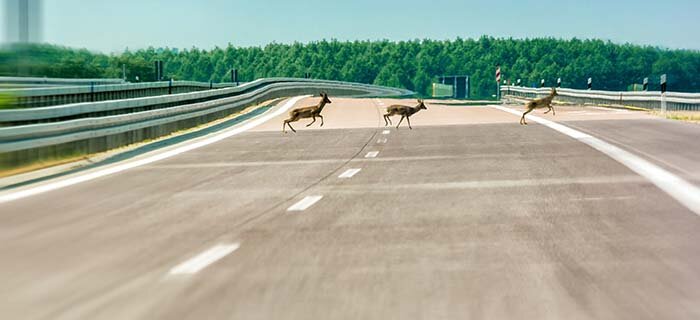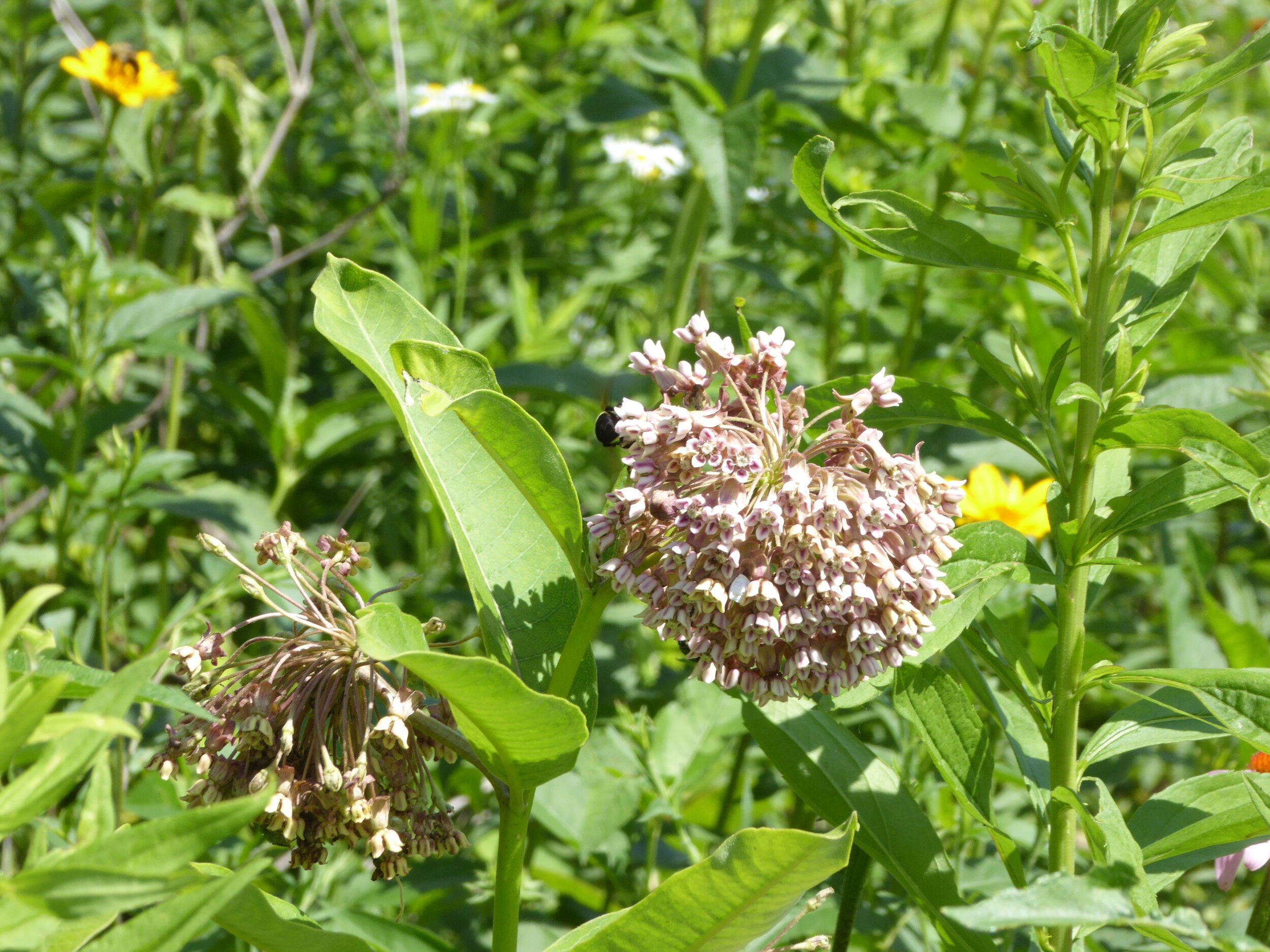
Wildlife Corridors
Corridors are Essential for Migration, Public Safety, Biodiversity
Wildlife Corridor Basics
Wildlife corridors are features that connect two or more otherwise isolated patches of habitat. Corridors can consist of natural features such as vegetation, water, or rock, or can be made by people. Corridors are vital for wildlife to access available habitats. They allow animals to travel safely from one area to another, but may also provide food or other necessities as well. In many cases, corridors already exist and simply need to be enhanced, or they can be created using idle areas on a farm or property.
More than 800 organizations in the U.S. and Canada are now using corridors to create webs of protected habitat between Yellowstone National Park and the Yukon.In 2006, Damschen and Orrock and their colleagues published the first definitive evidence that corridors are effective in extending plant biodiversity in fragmented large-scale habitats in a paper published in Science.
http://www.roadsandwildlife.org
National Wildlife Federation Fact Sheet
Kentucky Considerations
Kentucky is home to some of the most biodiverse habitats in the United States. Biodiversity and habitat connectivity play a vital role in the Commonwealth’s economy and are part of a rich natural heritage that is important to pass on to future generations.
Habitat loss, degradation, fragmentation, and obstructions are major contributors to the decline of populations of many native fish, wildlife, and plant species in this state.
Landscape and hydrological connectivity to transition from one habitat to another play an important role in conserving native biodiversity and ensure resiliency.
Legislation and Projects
The National Caucus of Environmental Legislators has been tracking wildlife corridor legislation across the nation and there has been recent momentum in the states.
Significant corridor projects in Kentucky include the Pine Mountain Wildlands Corridor in Eastern Kentucky and the Big Rivers Corridor project in Western Kentucky. KCC is looking at models at the federal level and in other states to prepare for future legislation in Kentucky.
Legislation:
Supporting one of the largest land conservation deals in the east, Senate Bill 241 (R. Webb) became law during the 2023 session, and would speed up the process for the Department of Fish and Wildlife to work with third parties to complete due diligence for the Kentucky properties involved in the Cumberland Forest Project, a massive multi-state (KY, TN, VA) project covering 253,000 acres of habitat, including 54,000 acres located in Knox, Bell and Leslie Counties. The land would be conveyed in partnership with The Nature Conservancy and the project includes elk habitat expansion, working with the Rocky Mountain Elk Foundation. The project would help create more contiguous land connections for wildlife corridors
News:
Toolkits:
Public Safety
Wildlife corridors increase public safety and are highly effective in reducing vehicle/wildlife collisions and the costs associated with those collisions.
Future Projects
The Kentucky Conservation Committee is actively working with land conservation allies and state agencies to explore the potential and resources available to support future wildlife corridor legislation for Kentucky. Please follow our progress in our newsletter by subscribing below.
Types of Corridors
From Ky. Dept. of Fish & Wildlife:
Woodland: The most obvious corridors needed across most of Kentucky are those connecting isolated woodlots. Because of the interspersion of pasture or hayland, cropland, residential or industrial development, or other land uses, patches of woodland are often isolated as islands or separated from neighboring woodlands.
Grassland: Wildlife need travel and protective cover between grassland areas to effectively use them. Pasture or hayland is the most common grassland type in Kentucky. While crop fields offer cover during part of the year, after harvest there may be no cover connecting permanent grassland areas.
Scrubland: The principles that apply to woodland or grassland corridors also apply to corridors used to connect isolated shrubby areas. Cedar thickets, old field areas that have a lot of shrubs or saplings, or areas that have been planted to shrubs or seedlings should likewise be connected by desirable plant cover corridors.
Wetland: Swamps, sloughs, and similar wetland habitats normally cannot be connected by identical habitat. In most situations, it simply is not feasible to create continuous shallow water wetlands. Corridors designed to connect wetlands should thus be focused on providing suitable vegetative cover between isolated wetland habitats.
Non-Vegetative: Natural and non-natural barriers to wildlife movements can sometimes be overcome with other habitat modifications. Roads that bisect breeding grounds for frogs and salamanders can devastate the amphibians’ local populations without suitable crossings. Larger animals such as bears and deer may pose threats to human safety as well as being jeopardized themselves if large and busy roads cut through their habitats. These problems can be remedied in part with human-made corridors.
This film gives an overview of how wildlife corridors provide benefits to animals, biodiversity and public safety.



